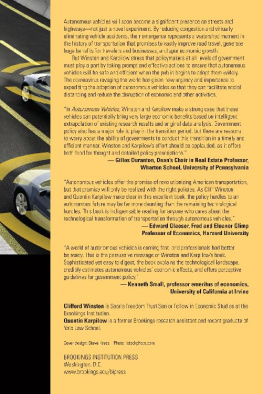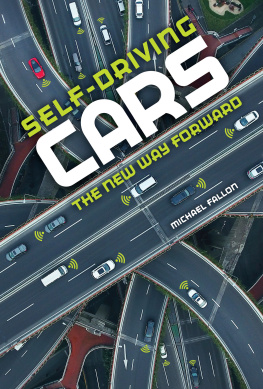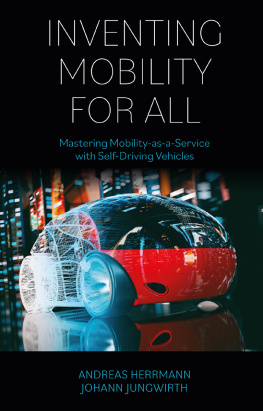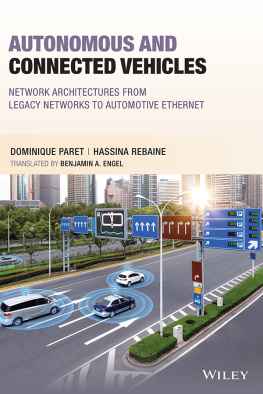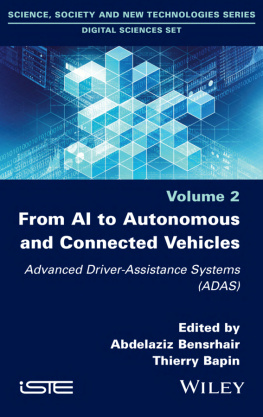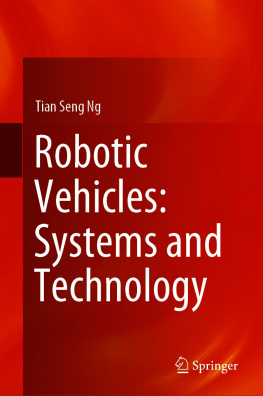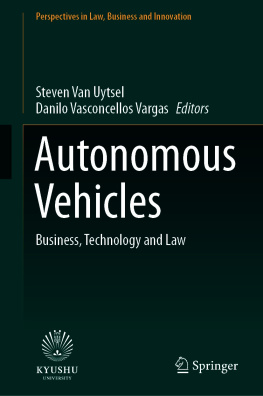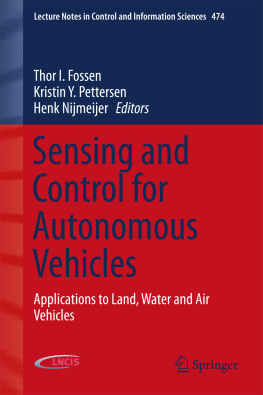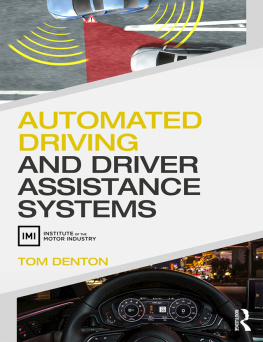Autonomous Vehicles
The Road to Economic Growth?
CLIFFORD WINSTON
QUENTIN KARPILOW
Brookings Institution Press
Washington, D.C.
Copyright 2020
THE BROOKINGS INSTITUTION
1775 Massachusetts Avenue, N.W.
Washington, D.C. 20036
www.brookings.edu
All rights reserved. No part of this publication may be reproduced or transmitted in any form or by any means without permission in writing from the Brookings Institution Press.
The Brookings Institution is a private nonprofit organization devoted to research, education, and publication on important issues of domestic and foreign policy. Its principal purpose is to bring the highest quality independent research and analysis to bear on current and emerging policy problems. Interpretations or conclusions in Brookings publications should be understood to be solely those of the authors.
Library of Congress Control Number: 2020936118
ISBN 9780815738572 (pbk : alk. paper)
ISBN 9780815738589 (ebook)
9 8 7 6 5 4 3 2 1
Typeset in Maiola
Composition by Elliott Beard
Contents
Acknowledgments
We are grateful to Edward Glaeser and Jos A. Gmez-Ibez for initial collaboration on a submission to the Wolfson Economics Prize, which included some of the material in this book. We also received useful comments and suggestions from Stephanie Aaronson, Martin Adler, Alan Blinder, Marlon Boarnet, Robert Crandall, Matthew Kahn, Ashley Langer, Paul Lewis, Shanjun Li, Robin Lindsey, Vikram Maheshri, Fred Mannering, Ashley Nunes, James Sallee, Marc Scribner, Chad Shirley, Kenneth Small, Mike Smart, and Jia Yan.
Katherine Kimball carefully edited the manuscript, Cecilia Gonzlez managed the editorial production process, and Enid Zafran created the index.
Part 1
Introduction and Background
Introduction
Transportation innovations and investments have contributed significantly to U.S. economic growth. They have enabled households to optimize their residential and workplace locations and their choice of employers; encouraged firms to increase the size and scope of their markets, reduce their inventories, and expand their choice of workers; and allowed consumers to benefit from greater competition among domestic and international firms and from more product variety. The motor vehicle, which has contributed greatly to those socially desirable activities, has been listed among the greatest human inventions of all time (Bowler 2017; Winston 2010).
The increasing dominance of cars and trucks for transporting passengers and freight has evolved with the development of the U.S. public road system, which represents the nations largest civilian public investment and has become the arterial network of the U.S. economy. Today, some 90 percent of commuters use cars to get to work, 70 percent of travelers use cars for intercity trips, and 30 percent of shippers of intercity freight (measured in ton-miles) and nearly all of their urban freight is shipped by truckall of those movements rely on a federal-highway capital stock that is valued at roughly $3 trillion (Winston 2013).
Given the importance for the U.S. economy of motor-vehicle transportation and the infrastructure that it uses, significant changes in the performance of either could have a large effect on economic growth. To date, however, the road network has been characterized by growing traffic congestion, deteriorating pavement, crumbling bridges, and a staggering number of crashes. The annual cost of congestion, vehicle damage, and injuries and fatalities runs in the trillions of dollars.
Some economists have argued that the decades-long underfunding of highway infrastructure is the cause of those problems. They have called for policymakers to increase expenditures to repair pavement, renovate bridges, build new roads, and modernize signaling.
Those calls for reform have largely gone unanswered. Federal efforts to improve our nations highway system have stalled for decades. Although nineteen states have raised their gasoline taxes since 2015, they have done so only because improvements in the fuel economy of the nations automobile fleettogether with a federal gasoline tax that has been fixed at its 1993 level of 18.4 cents per gallonhave led to shortfalls in federal money available from the federal Highway Trust Fund (Langer, Maheshri, and Winston 2017). Both major political parties agree that the United States has been experiencing an infrastructure crisis for years. However, they have yet to take any major steps to address it.
The Emergence and Potential of Autonomous Vehicles
Notwithstanding those bleak conditions, there is still hope for the highway transportation system. Self-driving or autonomous vehi cles, a long-awaited catalyst for change, are quickly emerging from the private sector. As this book argues, autonomous vehicles represent a watershed moment in the development of transportation. If properly encouraged, this innovation promises not only to vastly improve road travel and generate huge benefits to travelers, shippers, and delivery companies but also to benefit the entire economy by reducing congestion and virtually eliminating vehicle accidents. In addition, although autonomous vehicles effects on land use, employment, other modes of travel, and public finance are likely to be mixed, the negative effects are generally overstated, because they ignore plausible adjustments by the public and policymakers that could ameliorate them.
As Bowler (2017) notes in the case of air transportation, as late as the 1920s skeptics still scoffed at the whole idea of a commercially viable aviation industry. Rapid technical developments soon allowed their arguments to be discounted. Still, as late as 1937, Sir Harold Harley told a BBC audience that no major innovations could be foreseen in aviation technology (Bowler 2017).
Similarly, autonomous vehicles have attracted vocal naysayers, who assert that the technology may never work effectively enough to improve highway transportation significantly or that it will take a long time before those vehicles are in regular use and that even then, they are likely to increase road travel and to worsen congestion. Litman (2019) summarizes various doubts about autonomous vehicles. The popular press also feeds negative views with pieces titled Cars Are Death Machines. Self-Driving Tech Wont Change That (Arieff 2019) and Silicon Valley Pioneered Self-Driving Cars. But Some of Its Tech Savvy Residents Dont Want Them Tested in Their Neighborhoods (Siddiqui 2019).
We and others are optimistic about the likely success of autonomous vehicles in the long run for a number of reasons. The competition and cooperation that is evolving in the autonomous-vehicle industry is unprecedented in its global scope. The technology has greatly progressed and continues to advance at a rapid rate. The incentives for industry participants to succeed and the cost of failure are enormous. And it is plausible that competition among cities, states, and even countries will develop and provide incentives for policymakers to enact policies that expedite the adoption and efficient operations of autonomous vehicles.
Nonetheless, doubters are likely to modify their views only if and when autonomous vehicles are widely adopted and are operating safely and efficiently. In the meantime, policy analysts can play an important and constructive role by identifying and analyzing some important policy issues that must be addressed effectively to ensure that autonomous vehicles will be safe and efficient when the public begins to adopt them to replace nonautonomous vehicles.
A Global Effort
In 2011 two top engineers for Google traveled to Detroit in the hope of working with a car company to build and sell a fleet of self-driving cars (Burns and Shulgan 2018). But when no one in Detroit was interested, Google (and subsequently Waymo, its self-driving car project) took the lead in introducing autonomous vehicles to the world. A few years later, U.S. and foreign automakers, other technology firms, and various start-up ventures were in hot pursuit, either by themselves or in a partnership. Hundreds more companies have emerged to develop various components of the technology.
Next page
